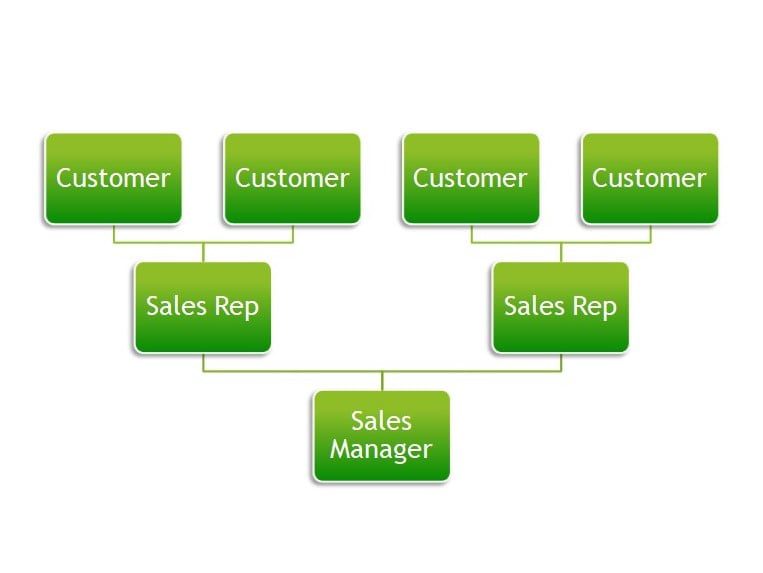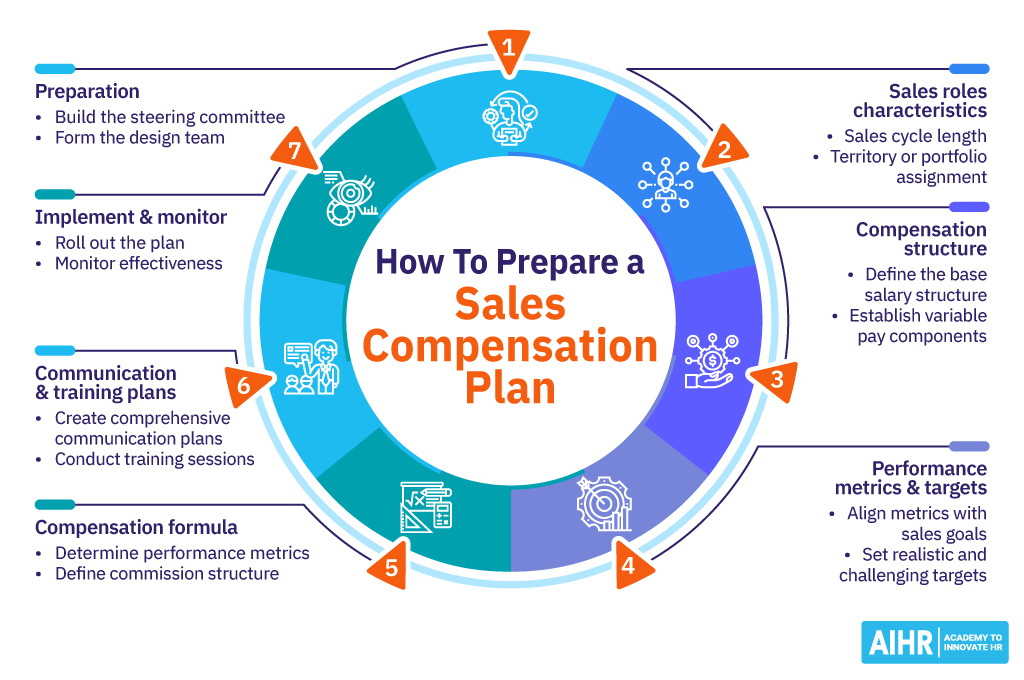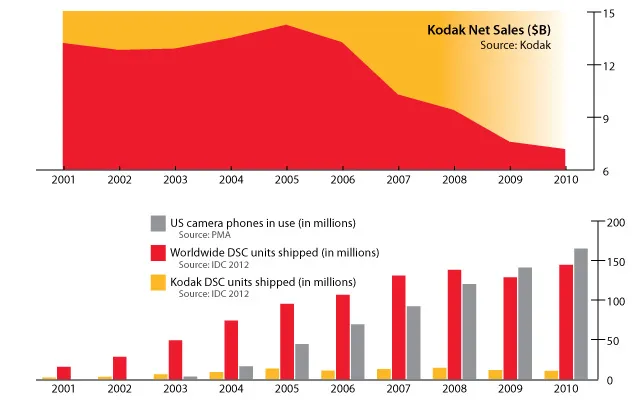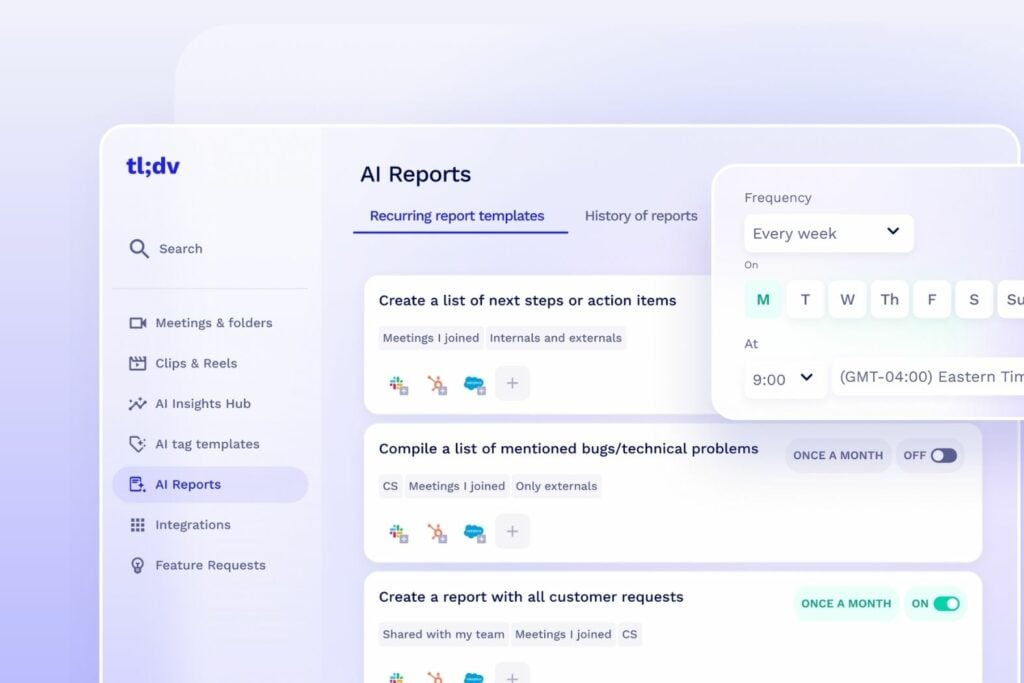Sales management is an incredibly crucial part of the entire sales process, and while the C-Level are the team that are responsible for driving the overall product and business forward, sales management and sales managers tend to straddle both worlds.
They are the linchpin to driving success and returns, but equally have minimal control over the actual “nuts and bolts” of what goes into the sale call. The role is about training, modeling and best practice, but also making sure that morale is maintained and that they are leading their team effectively.
And while the nature of any sales team, department or individual will vary based on a range of factors such as industry, company size, tactics, and even geography, good sales management is universal and can be learned as a set of skills, principles and understanding.
What Is Good Sales Management?
Ask this question to different people within the same organization and you’ll likely get different answers. A sales rep may talk about training, empathy and overall guidance, a CFO may say tripling ROI on staffing, technical outlay and resources.
So while the definition of “good” is subjective, it’s very easy to spot when sales management isn’t working effectively.
“Good managers execute as well as motivate. Not all leaders need to be managers, but all managers need to be good leaders. While managing is an art; leadership is a skill that needs to be inculcated and enforced while executing assignments through subordinates”
Henrietta Newton Martin- Author Strategic Human Resource Management - A Primer Tweet
In a study by Ohio University’s Dr Adam Ran, the academics looked at how many sales teams were hitting their overall targets, but then how that related to individual performance for reps.
The overall result was that many teams were hitting their entire target based on the efforts of just a few sales reps.
The real stand out statistic was that the average-performing sales manager had on average 99% success in hitting their quota, only 48% of the reps were actually hitting their targets. This means that although on the overall level the sales team was doing well, on an individual level this isn’t the case.
Good sales management should ensure that while the needs of the business are being met, this is from supporting the reps who need additional support rather than putting the pressure on individuals who are excelling. By having this approach you are able to make sure that if any of your highest performing sales reps leaves the business or team you are not left scrambling to hit the sales targets. By having everybody hitting targets consistently across the board, it leads to a much more stable team overall.

What Is A Sales Manager?
A sales manager is an individual whose role is to oversee the daily sales operations while also liaising with either the sales director, or those higher up in the managerial hierarchy.
A sales manager typically is the person who sets goals, team and individual targets and oversees recruitment and training.
The hallmarks of an effective sales manager are that they are typically a solid communicator, likely would have been a successful sales representative themselves, and be skilled at leading a team in good times and bad. Sales manager recruiters can help find qualified candidates for this position, ensuring they possess the experience and leadership qualities required.
What Is A Sales Director?
A sales director is someone that is a higher-level executive responsible for the sales department. They typically report into the CEO and other C-Level executives, liasing directly with their sales manager, or managers, for a more strategic role than operational.
Unlike a sales manager, who directly oversees day-to-day sales activities and team performance, a sales director operates at a more strategic level, often handling key accounts, negotiating large contracts, and establishing relationships with major clients. They also play a critical role in shaping the company’s sales strategies, market positioning, and pricing policies.
They will also be the one to liaise more with other department heads such as Directors Of Marketing, Development and Finance, requiring a more organizational and strategic approach.
Who Benefits From Good
Sales Management?
The short answer is, everybody!
When sales management works well the sales representatives are happy and fulfilled, the sales managers are too as a result.
This usually means that customers are happy and there are good quality sales calls happening. This is where there is the right balance of “sales” and customer satisfaction.
There is also the wider benefits of good sales.
Other departments are able to grow and thrive because money will be coming in, along with ideas.
And finally, the C-Level and stakeholders are happy. A company with a well managed sales department is usually a profitable one. Sales is the key to nearly every element of growth and success in a business.
Making sure that there are plenty of sales happening, for the right rate, with the right team in place, and at the right rate of growth. This is a recipe for success!
Strategic Sales Management
Sales management strategy is at the heart of it all. Strategy, by its definition, is the planning, implementing and controlling of sales and initiatives to align with the overall business objectives. It’s the process where every decision from the wording used, to the time that calls are made, to the way that the products are presented are done so for maximum impact, return and efficiency.
The landscape of sales is continuously evolving, shaped by technological advancements, shifting consumer preferences, and competitive dynamics.
Effective sales management must therefore not only anticipate these changes but also pivot quickly and strategically to maintain a competitive edge.
This role involves a continuous feedback loop where sales data and market insights inform strategic adjustments, making sales management a critical point of reflection within the business ecosystem.
It’s this strategic capability to interpret and act upon data, coupled with the skill to motivate and lead diverse teams, that defines the most successful sales managers and sales management teams.
Defining Compensation and Incentives
One of the main reasons that any person gets into sales is that it can be financially rewarding compared to many other roles and jobs. Even though compensation and commissions may vary depending on the company and industry, it’s likely that any sales manager and director will have to formulate some sort of commission structure that both incentivizes and rewards their sales team, while also not diminishing the bottom line for the C-Levels and stakeholders.
When sales management approaches compensation and incentives, they must carefully balance between motivating their team and aligning with the overall financial health of the company. Effective compensation strategies not only drive things such as in-house and remote sales performance, and how you choose varying sales performance methods, but also reinforce company values and goals. Sales managers should consider various compensation models, such as base salary plus commission, tiered commission structures, bonuses for achieving targets, and non-monetary rewards that can boost morale and encourage loyalty.
To optimize these incentives, it’s crucial to have clear, achievable, and measurable goals that are understood by all team members. Incentive programs should be transparent and regularly reviewed to ensure they continue to meet the needs of both the sales force and the business. This involves analyzing performance data, gathering feedback from the team, and staying informed about industry best practices.
A well-thought-out incentive plan can serve as a recruitment and retention tool, attracting top talent to your organization and reducing turnover. By linking compensation directly to performance, sales managers can create a high-energy, results-driven culture that consistently pushes the envelope towards greater achievements.
Below you’ll see a graphic that shows a detailed process for how to create a compensation plan for sales.


You track your sales performance metrics to ensure you’re making great business decisions. Boost your sales metrics with these tips…
Setting Goals and Sales Team Quotas
Another measurement that sales management must look at very carefully, and is often the one that causes the most friction on both sides of the sales management’s role, is sales quotas.
While using sales forecasting methods and accumulated data can help to drive these in a logical and finite way, there is also an art to creating and delivering them as well.
It’s simple however.
Set goals too high and you demoralize your sales team and mislead the upper management.
Set goals too low and you may find your sales team coasting and upper management questioning your forecasting abilities.
The sweet spot when it comes to quotas and goal setting is to find the target and then the stretch target. You want to build on previous sales successes, you need to be aware of seasonality when it comes to each quarter and also what is happening in the wider world, but also you need to keep them realistic.
And much like setting personal goals, the SMART framework can still be a valuable tool in the sales manager’s arsenal when it comes to quotas.
- Specific: Goals should be clear and focused, leaving no ambiguity about what is expected.
- Measurable: There must be a clear metric by which to gauge success or failure.
- Attainable: While challenging, the goals must be achievable to maintain sales motivation.
- Relevant: Each target should align with broader business objectives, ensuring that every effort contributes directly to the organization’s strategic goals.
- Time-bound: Goals should have a clear timeline, creating urgency and a timeframe for assessment.
Also, targets should ideally be adjusted based on the individual members of the team, their skills and experience. Personalized goals not only cater to the strengths of each salesperson but also address their areas for development, making the goals more relevant and motivating.
Goals shouldn’t be set in stone either. While the upper management may feel different, it’s important to be agile and realistic when it comes to making adjustments based on the current conditions. It shouldn’t be “set-it-and-forget-it”. A sales manager should be constantly checking in with both the customer-facing team members, as well as keeping the senior management team informed. An adaptive approach helps maintain team motivation and ensures that sales strategies stay relevant, maximizing both individual and organizational sales performance.
Sales Forecasting & Future Planning
In order to reach the figures for sales quotas, sales management is also responsible for sales forecasting for the team.
This is where the figures start to become more about the wants of the upper management and stakeholders, rather than the day-to-day sales figures.
Sales managers should have the birdseye view of the numbers, the trajectory of sales and access to the data and software that helps to plan based on trends and market conditions.
This is also the area where they need to be champions for their sales team. A solid sales manager knows the importance of balancing the needs of the business with the realistic expectations of the sales team. There is nothing more demotivating than a sales manager agreeing to unrealistic targets with the C-Levels and then pushing their team to try and achieve the unattainable.
Equally important, they need to forecast for growth so that the upper management can strategize how they are investing and growing the business. Keeping things too “safe” can lead to business stagnation, missed opportunities and the chance that any competitors will take advantage of the gaps left by an organization.
Both sides of this are obvious with two different companies and their stories of demise.
One company that crumbled in part due to unrealistic targets was Wells Fargo.
Employees, under pressure to meet these unrealistic goals, resorted to opening millions of unauthorized accounts without customer consent. This not only led to massive fines and reputational damage but also highlighted the severe consequences of setting excessively high sales goals.
The scandal resulted in a $3 billion settlement to resolve criminal and civil charges related to these practices, underscoring the importance of ethical sales target setting and the risks of prioritizing short-term gains over sustainable business practices. This is a clear example of where sales management has failed on a spectacular level.

And on the other side, where complacency and coasting led to the downfall was the case of Kodak. While not directly related to sales targets being too low, it was more driven by plowing more focus into sales targets based around traditional film in order not to “cannibalize” their current market share. This led to a very small emphasis into digital sales, while other competitors such as Nikon and Canon focused on these.
The result was that Kodak eventually filed for bankruptcy in 2012. In this scenario, while sales management would have likely have relayed this shift in industry to the upper management, the C-Level executives ignored this and kept with their overall strategy towards traditional photography.
Sales management were unable to take the hard data and market chatter their teams would have had to change the course of the company’s fortunes, and while the fault doesn’t lay with them it does ask the question if they pushed against the upper management hard enough with any findings or were just coasting along looking at the current quarter figure. The even sadder irony of their failure is that a Kodak staff member was the one who actually invented the digital camera back in 1975.
However, when sales management gets this balance right it can be absolutely transformative for a company’s fortunes. Some of the most well-known brands in the world started life as very different companies.
Sanrio – Originally, Sanrio started in 1960 as a silk company that also published poetry. However, it used market data to shift towards the gift market, specifically focusing on creating cute character merchandise. This pivot was greatly successful, culminating in the creation of Hello Kitty in 1974, which became a global cultural phenomenon. Sanrio used its sales data and market trends to expand into various other characters and an extensive array of products ranging from school supplies to fashion accessories. Today it’s worth around just under $5 billion in 2024.
Nintendo – Nintendo is synonymous with gaming and innovation but it actually began in 1889 as a playing card company. Over the years, Nintendo used market analysis and forecasting to transform into a toy company and eventually into one of the leaders in the electronic gaming industry, especially after seeing the potential of electronic entertainment in the 1970s. It resulted in a company that is valued at in excess of $65 billion dollars as of 2024.
IBM – The humble beginnings of this tech firm included selling, of all things, meat and cheese slicers! The Computing-Tabulating-Recording Company began trading as a single entity in 1911, but through strategic transformations guided by market needs and technological advancements, the later renamed IBM shifted focus to computing technology, particularly hardware and later software and services, becoming a dominant player in the technology sector. Today its market worth is estimated at around $170 billion.
All three of these success stories display how having the bridge between sales and upper management can change the entire trajectory of any business or organization. Sales management needs to be nimble, agile and brave, not just when it comes to taking risks but informing their superiors on the best way to help guide the business forward.
Onboarding and Continuous Training
One of the most influential areas that sales management has is when it comes to recruitment and development of their team and employees. Having solid sales management means being able to build teams that have sales skills already, but also willing to put time, effort and investment into the development of those skills in the long run.
One of the most impactful ways to onboard a new recruit is to have a constantly evolving and interactive sales playbook available to them, along with a separate customer success playbook. By having these documents any new hire can easily refer to what is best practice, have workable examples and also some quick answers to simple questions.
Sales management has to ensure that they balance the approachable with their teams with the authoritative nature of management. They need to be able to help develop and transform their sales teams into well oiled, collaborative teams that are focused on a shared goal and vision, but also make sure that they can make hard decisions when needed.
Below you will find a video that talks about continuous improvement, or “Kaizen” which is relevant both for the sales rep, but also for the sales management as well. This approach is a very good basis to use whether you’ve just started in sales management or or have many years of experience.

Unlock sales success with a Sales Playbook. It’s your strategy guide for aligning teams and refining methods to win in the sales arena.
Key Elements to Success: Discipline & HR Support
There is a school of thought that believes that discipline in sales and sales management has more impact than actual sales skills and talent. Anthony Iannarino, author at TheSalesBlog states that discipline is in fact the key sales skill.
As sales managers, knowing when to put pressure on your teams and when to hold off can be tricky to excel at. Too soft and the sales teams can end up taking advantage of your good nature, it can also lead to sales management acting as the punchbag from the displeasure from upper management. Too much hard discipline and sales management as a whole can be seen as tyrannical leading to more staff turnover.
This is also key to the overall company culture as well. Many in sales will have loved the company they work for but hated their manager. Equally how many sales reps have hated the business they worked in but had a sales management that made it manageable. Ultimately the one where the sales management is good is the one where reps will stay on and feel supported.
Another area that is absolutely pivotal to the success is how sales management manages underperformance. This is another balancing act between sales reps, upper management and more, but with added nuance within the sales team itself.
Sales managers should look to approach disciplinary procedures and tools such as performance improvement plans as positives rather than negatives. There is a generally held view that these are simply ways to “get rid of” underperforming staff. And while this is certainly true in business where there is a bad work culture, or even workplace bullying, when used effectively they can actually be great tools for improvement and development. This not just for the reps either, but for sales management themselves and also company wide.
If you are finding that these are being used more frequently than expected, it can highlight deeper issues within the organization. Here are some examples:
- Are the performance plans mostly based on not hitting targets?
- Are targets too high?
- Is there sufficient training being delivered in a way that’s actionable?
- What about the data the teams are working from?
- Is marketing targeting the wrong customer persona?
These are all questions that can be ascertained based on the data of sales performance.
Equally if you are experiencing a lot of negative feedback from sales reps, and you’ve looked at all these options, are you hiring the right people? What are your hiring criteria? Are there any trends in certain departments or geographies that need exploring?
Sales management can take these and work alongside departments such as Human Resources to make sure that there is continuous improvement in hiring, onboarding, training and development, and even firing.
A good culture in a sales environment that encourages growth and strives for achievement, without any (or at least a relatively small) will often keep certain issues in check naturally. Also sales can be a tough environment emotionally, psychologically and even physically. Sales management have a responsibility to their team to look out for their wellbeing and push for a better company culture. While upper management may have ideas based on wellness initiatives and other opportunities that can be outsourced, many health related issues can be managed by just good sales management.
Collaboration With Other Departments
Much like working directly with upper management and Human Resources, sales collaboration with other sectors of the business is one of the key strategic roles of sales management. Sales managers and directors are the figureheads that champion their team, but also liaise and feedback to the team from other departments.
Sales Management & Marketing
One prime example of this, and how it can drive a company forward, is the synergy between sales and marketing. They are both after similar goals, but with different methodologies, practices and sometimes targets. But the continued success of both departments is in the two working collaboratively together.
Marketing provides the messaging and branding that help create demand, while sales directly engages with potential customers to convert that demand into revenue. By aligning these functions, both departments can more effectively target the right audiences with consistent messaging, which can greatly enhance the conversion rates and overall success of the business.
When they get it right, marketing gets the right customers to sales, pre-qualified allowing sales to build one-to-one relationships to bring them into the company.
When it goes wrong, marketing gets the wrong customers, who aren’t qualified, or sales reject perfectly good prospects based on their perception of the marketing department.
They both want good customers who will suit their product or service. But the collaboration between them needs to be on point. Sales management needs to keep communication flowing between the two and also give honest, but constructive feedback on the quality of marketing qualified leads and the general brand perception that their sales representatives are receiving from prospects.
Sales Management & Product
Another very important relationship is between sales and product. This relationship is crucial because it ensures that the products and services being developed are in line with what the market wants and needs.
Sales teams have direct contact with customers and gain valuable insights into customer preferences and pain points. By relaying this information to product development, sales can help guide the creation of products that are more likely to succeed in the marketplace.
Sales teams can provide real-time feedback from the market, which is invaluable for product development. This feedback can lead to adjustments in product features, design, or functionality that better meet customer expectations and demands.
For example, if sales feedback indicates that customers are looking for more user-friendly interfaces on a software product, the development team can prioritize this feature in the next update or new release.
Regular meetings between sales and product development teams can facilitate an ongoing exchange of information. This could be formalized through regular reporting processes or more informal ‘catch-up’ sessions where sales representatives share customer feedback directly with developers.
When it goes right, product knows more about what the customer wants alongside the information being provided by user research. This builds a better understanding and makes it easier for them to be customer-centric. This approach makes the product easier for the reps to sell.
When it goes wrong, product creates based on incorrect information and even bias. Sales, while chasing target, may stretch the capabilities of a product, tool or service leading to unhappy customers.
Again, sales and product are on the same team and have similar goals. They work in completely different ways, but are so important that one cannot function without the other.
Sales Management & Customer Success
And finally the collaboration between sales and customer success is probably the most crucial when it comes to managing the overall churn of a company. Sales management and customer success collaboration is vital for fostering long-term customer relationships and ensuring the longevity of the business. The handoff from sales to customer success is a critical transition in the customer journey, where the promise made by sales is turned into ongoing value realized by the customer.
When this partnership works well, customers experience a seamless handoff where their needs and expectations are clearly understood and met, leading to increased loyalty and opportunities for upsells. Sales provides vital insights into customer expectations, which customer success uses to tailor their support, ensuring that promises made during the sales process are fulfilled.
However, when this isn’t facilitated well customers may feel misled if their experience doesn’t match the expectations set by sales, potentially leading to dissatisfaction and churn.
It can be incredibly key for this interaction to be managed properly as important feedback from customers towards things such as sales strategies could be lost. This is such an important aspect of sales management to make sure these two departments are on the same page not just for customer satisfaction but overall decent working relationships.

Technology In Sales Management
One of the benefits of being in sales management in the modern world is the absolute plethora of tools and technology to help guide the process. So much of the boring grunt work that would have taken up a lot of sales managers, and even reps, time has been done away with thanks to new software, automation and AI.
These are not replacements for good sales, and although there is a case of virtual sales reps and even AI sales tools, these technologies should make sales easier and better for the customer as well.
There are always going to be some learning curves and challenges when it comes to technology in sales. There were many who struggled with the transition from door-to-door sales to call centers, and from call centers to global sales conducted on Zoom.
However, the fundamental sales process that sales management should be purveying to their teams is still the same structure as it has ever been (with maybe a few more steps thrown in for the shift in culture when it comes to purchasing).
Examples of Sales Technology
CRM Systems
Customer Relationship Management tools, also known as CRM systems, are essential for sales management. They provide a centralized platform for tracking interactions with customers and prospects. These systems help sales teams manage leads, opportunities, and customer accounts efficiently, ensuring no potential sales opportunity is missed.
CRM platforms like Salesforce and HubSpot offer extensive customization and integration options, making them invaluable in a data-driven sales environment.
One really big impact with these is having a place to check up on the status of your reps deals and pipeline without the need to ask them directly, or sifting through paper notes. It’s there, searchable and stored carefully for present and future interactions with clients. It also helps with anything such as external audits and compliance.
Analytics Software
Analytics tools provide data-driven insights that help sales managers understand performance trends, forecast future sales, and make informed decisions about where to allocate resources.
These tools can analyze vast amounts of sales data to identify patterns and trends that might not be visible otherwise.
Platforms like Tableau, Google Analytics, and Looker help visualize sales metrics in a comprehensible way, making it easier for managers to track progress and identify areas needing improvement.
It can also cut through the “noise” of sales as well. Many sales reps will focus on details and relationships which are important to the overall sales process, but analytics tools cut through the clutter and give the facts.
From how many people are going to your sales page on the website, to how many times a prospect said “No” to a rep before signing. This clarity makes it so much easier to work out forecasting, training and development plans, find particular instances, and even provide clear stats to show the C-Level.
Client Communication
Even the way sales communicates with its potential clients has been supercharged by technology. From VoIP phones to social media and email, the biggest surge in recent years has been the shift from analog to digital communication.
Sales now relies on unified communication platforms that integrate email, video calls, instant messaging, and even social media messaging into a single environment. This integration ensures that no matter the customer’s preferred communication channel, the interaction remains fluid and consistent.
For example, a conversation that begins over email can seamlessly transition to a video call or instant chat without losing context or requiring the customer to repeat information. This can then be automatically pulled into the CRM system or analytics software to save time on manual data entry and prevent bias as well.
AI In Sales
Artificial intelligence (AI) and machine learning are transforming sales by enabling more personalized customer interactions and predictive sales analytics.
AI can automate routine tasks such as lead qualification and follow-up scheduling, allowing salespeople to focus on closing deals. Moreover, AI-driven analytics can predict customer behavior and sales trends, providing sales managers with insights to make informed strategic decisions.
Even AI built into some of the other mentioned technologies, such as in CRM systems that automatically send emails based on time of year and market conditions, to automatically generated reports that can be programmed into your call recording software to flag particular phrases or words.
This is already the case with tl;dv where you can create automated reports based on anything, to a smart AI query system where you can ask the AI questions about meetings using conversational intelligence.
It can all be used to help sales management identify the best way to get their team to sell, and the company and departments to create and push forward easier selling opportunities.

In the AI Era, every week new tools emerge, offering unprecedented potential for efficiency gains. Now, more than ever, there are opportunities to leverage these gains to outpace competitors.
The Pros & Cons of Sales Technology
There are, as mentioned above, some great tools and technology features that can be used to enhance sales. There are also some pitfalls to these as illustrated below:
Benefits
The integration of technology in sales management offers numerous benefits:
- Increased Efficiency: Automation of routine tasks reduces the time sales teams spend on administrative duties, increasing their focus on sales activities.
- Enhanced Customer Relationships: CRM systems provide a 360-degree view of customer interactions, helping sales teams deliver personalized experiences.
- Data-Driven Decisions: Advanced analytics tools enable sales managers to forecast sales trends and adapt strategies based on real-time data.
- Scalability: Technologies like cloud-based CRM and AI scale with the business, supporting growth without a proportional increase in overhead.
Challenges
Despite the benefits, integrating new technologies also presents challenges:
- High Initial Costs: Implementing new technologies can be costly, especially for small to medium-sized enterprises (SMEs).
- Complexity in Integration: Aligning new technologies with existing systems can be complex and time-consuming.
- Training and Adoption: Ensuring that all team members are trained and comfortable with new tools can be a daunting task.
- Data Security: With the increase in data usage, securing sensitive customer and business information becomes critically important.
Examples Of Sales Management Technology
Salesforce is being used by Coca-Cola Germany. While it’s driving forward the sales and sales management, because it’s a single entity that has brought in elements of manufacturing and customer service, there is a bigger data set for sales management to look at when it comes to trends and forecasting.
So when a rep in Coca Cola’s sales department logs an interaction with a potential customer, that information can be pushed to various teams for strategic reasons but also serves as a note and milestone for the overall relationship with that customer in the future.
Another example is actually between three very well known sales tool companies. HubSpot uses both Slack and Zoom to streamline its sales management communication, crucial for coordinating its global teams.
These tools seamlessly integrate, allowing for efficient transition from messaging on Slack to real-time video calls on Zoom, facilitating quick decision-making and problem-solving. This capability is vital not only for internal strategy alignment but also for maintaining their many customer relationships.
Each interaction, whether logged in Slack or discussed over Zoom, enriches HubSpot’s customer data, enhancing sales strategies and ensuring a seamless customer experience. This integration exemplifies how HubSpot optimizes communication within its sales teams and with clients, driving productivity and growth.
Sales Management in Different Industries
Sales touches every single business in the world. There are no exceptions to this and while there may not be an actual sales team to sell, there will always be some sort of money coming in and out of a business. However the approach to sales management can be incredibly different depending on the industry, size of business and even the target market.
Business-to-business (B2B) sales and business-to-consumer sales (B2C) are incredibly different and require completely different skillsets and approaches. However they will both still need managing.
Typically B2B sales often involve longer decision cycles and higher transaction values, emphasizing relationship building and in-depth product knowledge. Conversely, B2C sales prioritize quick transaction times, broader market appeal, and emotional engagement, catering to the personal needs and desires of individual consumers.
Both models require adept management to ensure alignment with broader business goals and to drive sustained revenue growth.
Even different industries, with items or contracts of similar value have very different styles and approaches when it comes to the way that sales management is approached.
- Manufacturing: Long sales cycles are typical, with emphasis on the technical training of staff. This industry requires strong rapport-building skills, which are key for upselling and negotiating long-term contracts.
- Technology (Software and SaaS): Can involve complex sales cycles with a significant focus on customer education and ongoing support. These elements are vital for maintaining long-term client relationships and securing subscription renewals. There is typically a lot of continuous product development as well so the sales management may involve a heavy approach to continuous contact to update potential prospects on new features.
- Pharmaceuticals: Characterized by stringent regulatory requirements and long approval processes, sales managers require sales teams to have a solid understanding of scientific data and the ability to convey this effectively to healthcare professionals.
- Automotive (Commercial Vehicles): Sales involve detailed product demonstrations and relationship selling, targeting fleet managers and procurement departments with a focus on performance metrics and cost-efficiency.
- Finance (Commercial Banking and Investment Services): Features relationship-focused sales cycles where offering customized financial solutions and building trust are crucial for securing business with corporate clients.
- Telecommunications (B2B Solutions): Requires maintaining continuous relationships and emphasizing service quality and technological advancements to meet the evolving needs of business clients.
And while many sales reps and managers can shift from one industry to another because the fundamentals of sales are so similar, it’s key to show that sales management will need to have different priorities when it comes to goals, expectations and general operations.
Global Sales Management Approaches
Understanding and adapting to cultural nuances is crucial for global sales management. What works in one region might not necessarily resonate in another due to deep-seated cultural differences, especially in sales strategies and workplace norms.
Being able to understand, or at least be aware of, regional business etiquette is paramount.
For instance, in many Asian markets, such as South Korea and Japan, the emphasis is typically on building long-term relationships that can significantly affect negotiation tactics, often requiring numerous meetings and the presence of senior executives to finalize deals. Conversely, in North America, business tends to be more results-oriented with a focus on quicker decision-making and shorter sales cycles.
Being able to adapt sales, and in turn your sales management strategies, to accommodate global customs can lead to better alignment with market expectations and increase the effectiveness of sales initiatives.
For example, in European markets, demonstrating an understanding of local languages and legal standards shows respect and professionalism, fostering trust and smoothing the pathway for negotiations.
By incorporating these culturally tailored strategies, sales managers not only enhance their team’s ability to penetrate diverse markets but also significantly boost global sales effectiveness. It also provides an addition to not only help develop the sales team’s skills through training and culture sharing, but also allows for C-level executives to think about hiring out broader and further afield with remote working becoming so much more of the norm in this day and age.
Having a sales manager based in Finland for example, while the team is scattered across a number of countries and timezones means that not only do you have the ability to sell to the entire world, but you can also have a team that is available to any customer day or night.
There are some other areas that need to be considered however. An example of this could be an American sales manager leading a European team might face challenges due to different work culture expectations. For example, European work environments often emphasize work-life balance more strongly than in the US, which can influence work hours, workplace communication, and overall team dynamics.
Sales managers must also navigate varying legal landscapes regarding advertising, consumer protection, and data privacy laws, which can differ significantly from one country to another.
Below you’ll find a brief video that talks about some of the cultural differences between the US and UK when it comes to business. While both countries share a common language, often elements of the business and as a result sales and sales management culture, are very different.
Generally speaking though, embracing these diverse cultural expectations can significantly enhance a company’s ability to penetrate new markets. Training programs tailored to address these differences, including cultural sensitivity training, can equip sales managers with the tools they need to succeed globally. This broader understanding not only improves interactions with international clients but also enhances internal team cohesion and respect.
10 Quick Sales Management Tips & Tricks
There are many books out there telling people how to be “good” at sales management, along with courses and videos galore. However, here are ten additional tips and tricks to add to your sales management toolkit:
1. Embrace Storytelling: Use compelling narratives about your products or services to engage both your team and customers. If people buy into your story, be it your newest sales rep or the potential new partner, they’ll remember you.
2. Encourage Curiosity: Foster a culture where team members ask questions and seek out new knowledge to better understand the market and customer needs. There is often “no such thing as a stupid question”, but really embrace that. If someone is asking it, then it’s likely others are thinking about it.
3. Cultivate Resilience: Train your team to handle rejection as a step towards eventual success. Don’t shout, don’t scream, don’t blame. Just explain that each step is closer to a “yes” and these are all lessons.
4. Make the Most of Diversity: Encourage diverse ideas and strategies within your team to foster innovation and capture a broader market. Just because something has been done a particular way for a long time doesn’t make it better. Bill Gates always claimed about hiring a lazy person to do a job because they’ll find the best way to do it in the easiest way.
5. Emphasize Authenticity: Teach salespeople to value honesty and integrity, building long-lasting customer relationships. Do not encourage people to lie or deceive, but instead teach skills about reframing and looking at the positive.
6. Focus on Emotional Intelligence: Develop skills in empathy and emotional awareness to better connect with clients and team members. People buy from people, and if people can connect with your sales reps that’s half the battle right there.
7. Apply the 80/20 Rule: Focus on the 20% of your clients or strategies that generate 80% of your sales results. Encourage customer-centric upselling, look for opportunities and nurture those current relationships.
8. Stay Grounded in Data: Use data-driven insights to make informed decisions but don’t forget the human element in sales. Data can uncover the truth behind sales, but equally don’t let it dictate everything.
9. Encourage Risk-Taking: Allow your team the freedom to innovate in their sales tactics, which can lead to breakthroughs in performance. As long as it doesn’t hurt anybody it could end up being the “next best thing”.
10. Promote Work-Life Balance: Ensure your team maintains a healthy balance to sustain productivity and avoid burnout. Too much of the modern world is built on presenteeism. The best sales reps are the ones that feel heard and cared for.
What Is the Future For Sales Management?
It’s clear that the sales management as a field is poised for some really big transformations driven by the latest developments in AI, evolving market dynamics, and changing consumer behaviors.
Using AI in sales helps make better and faster decisions by uncovering insights that standard methods might miss. In the future, this technology could not only predict how well a product will sell but also quickly adjust strategies in response to changes in the global market.
Additionally, more sophisticated advancements are leading reps to be able to provide more personalized services and offerings. This isn’t just in the customer-facing parts of the role, but across the board in all areas of sales.
This technological advancement benefits not just customers and reps but also provides managers with greater visibility and crucial data points. This information is essential for evaluating performance and tailoring training programs to meet the unique needs of their teams.
One area that we are already seeing a huge shift is the that the future of sales is going to be customer-centric. Sales strategies will increasingly focus on delivering superior customer experiences, integrating seamless service with proactive engagement.
The traditional sales role and sales management as a whole is not just changing; it is being completely reimagined. Roles and strategies that were once foundational are evolving into something new in this customer-focused, efficient, and golden age of sales.





